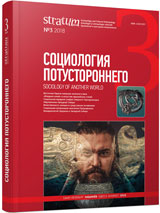Роль образа Πότνιος Ἳππιος («Владыка коней») в искусстве евразийских степей и античного мира в первой половине I тыс. до н. э. как этнокультурного и социального маркера
The Role of the Image Πότνιος Ἳππιος (“Horse-Leader”) as Ethnocultural and Social Marker in the Art of the Eurasian Steppes and Classical Antiquity in the First Half of the I Millennium BC
Author(s): Sophia A. ZintchenkoSubject(s): History, Archaeology, Cultural history, History of ideas, Ancient World
Published by: Издательский дом Stratum, Университет «Высшая антропологическая школа»
Keywords: Ancient Greece; Mycenaean period; 8th—6th cc. BC; Vases of the Geometric Style; Horse-Leader; Small Plastic Pieces; Eurasian Steppes; II—I Millennium BC; petroglyphs; Ethnocultural and Social Markers
Summary/Abstract: The image of Πότνιος Ἳππιος occurs both in the 1st millennium BC petroglyphs of Eurasian steppes and in 8-century-BC vase paintings of Attica and Argos. Imagery created in different territories during that period features identical and repetitive iconographic schemes, similar up to a single detail (first of all, in shapes of headdresses, haircuts, etc.). Similar images of Πότνιος Ἳππιος in different cultures testifies to the importance of this type of imagery as a recorder of an important mythologem. It might also be linked to the particularities of culture genesis in Attica and Argos and can testify to the use of this imagery as ethnic-cultural and social markers.
Journal: Stratum plus. Археология и культурная антропология
- Issue Year: 2018
- Issue No: 3
- Page Range: 149-164
- Page Count: 16
- Language: Russian
- Content File-PDF

